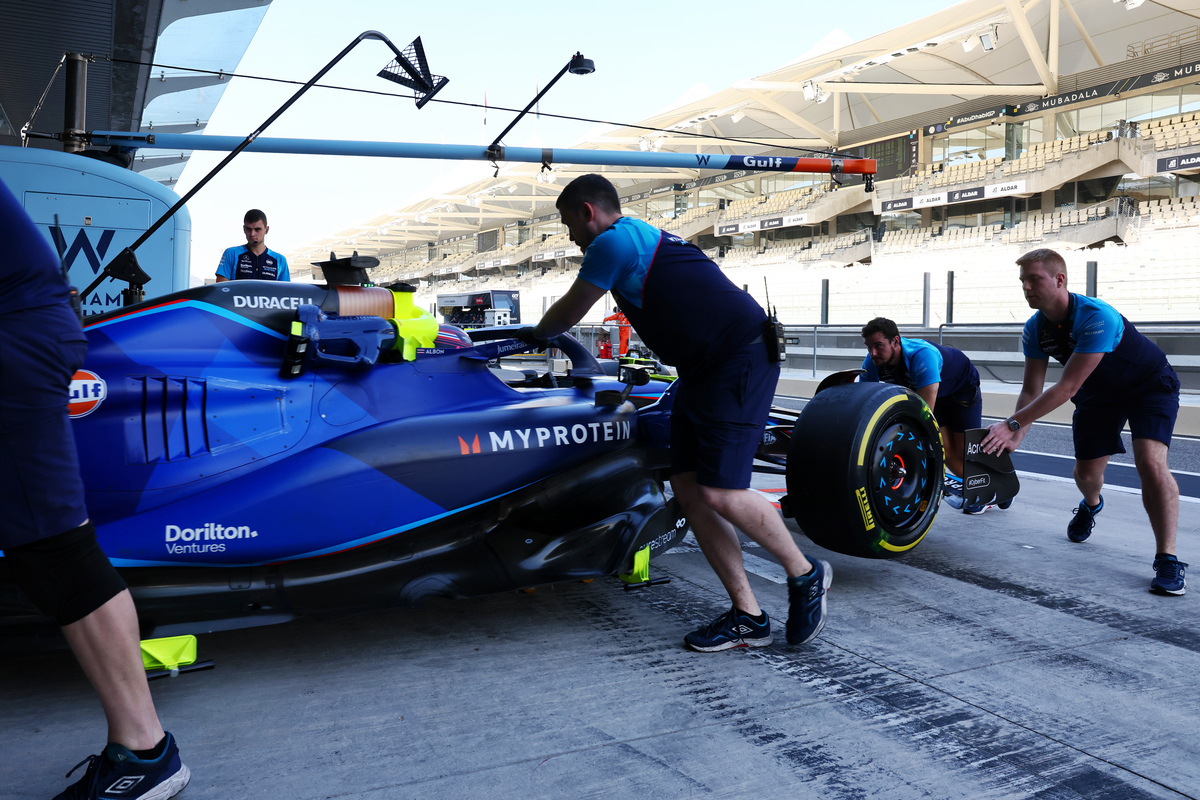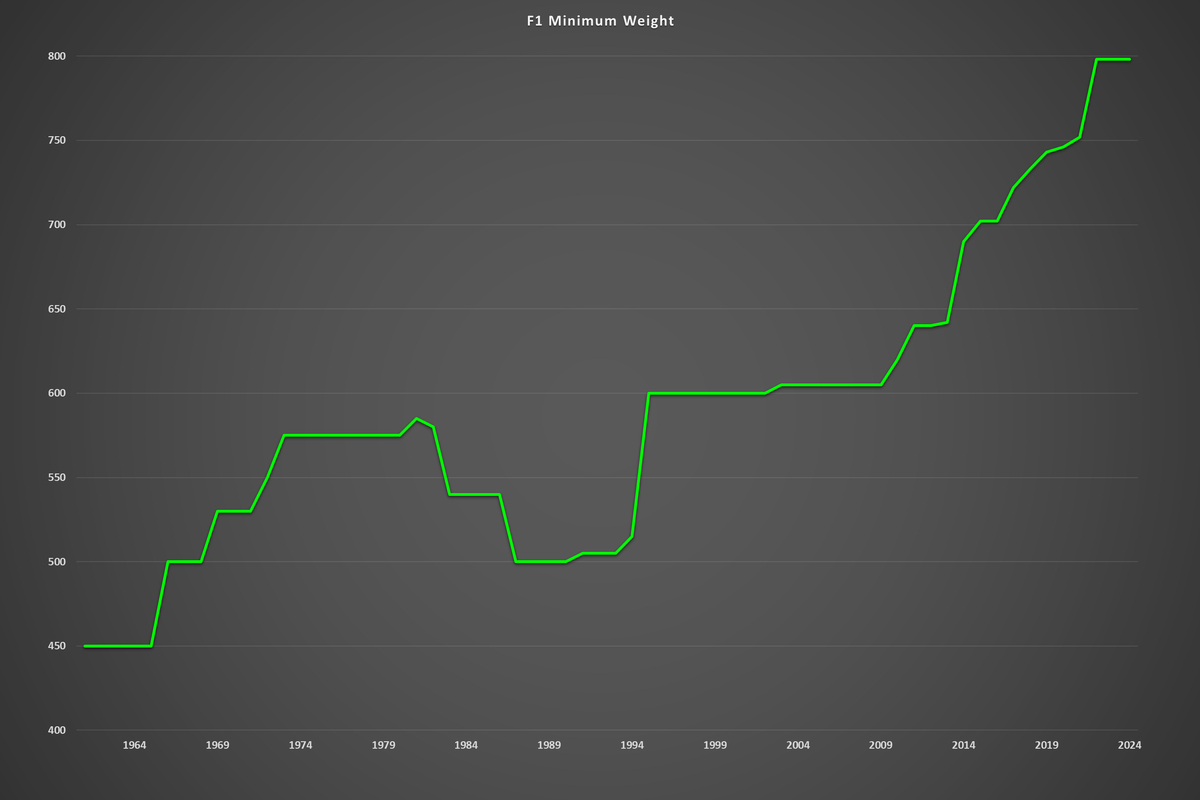

Cars are currently the heaviest in the sport’s history, at 796 kilograms, a more than 40-kilogram increase over the rules in place in 2021.
Vehicle mass has been creeping up for some time, partly due to the technical regulations surrounding power units but also to address safety concerns.
Before the introduction of hybrid engines, cars weighed just 642 kilograms. In the 1980s and early 1990s, they weighed just 500kg.
However, more stringent crash test requirements have necessitated increasing material in side impact structures, among other areas, which have all contributed to the minimum increasing.
The result is cars that are less nimble than their counterparts and, according to some drivers, less fun to drive.
Ironically, the additional material needed to satisfy safety concerns creates some of its own, as with greater mass comes greater force in an impact.
While F1 cars are not the heaviest competition vehicles, they are among the fastest and, therefore, can pose a challenge regarding circuit safety requirements.
“Cars have gone up [in weight] since Lewis [Hamilton] started in 2007, so have gone up by about that [150kg] amount,” acknowledged Nikolas Tombazis, the FIA’s head of single seaters.
“That is split in fairly big chunks between the power unit and obviously all the electrical parts and so on.
“We feel that we can’t do, much as we would like from a purely motorsport enthusiasts point of view, [is] to have a normally aspirated [engine] and so on, but the reality is that we need to be responsible for what’s happening with the [planet] in general.
“The other one is safety, and third factor is complexity, and the fourth factor is dimension.
“So basically, when the cars went wider and bigger wheels and so on, over the years, longer, they became quite a lot heavier.
“Now we believe that what we doing for 2026, we can probably lose 40/50 kilos from that weight.
“It’s not a walk in the park. We believe it’s feasible to do.”
Discussions have gone so far as to entertain the prospect of doing away with a minimum weight in F1 altogether.
The logic followed that a prescribed weight is redundant given the inherent weight of the power units and the need for cars to pass stringent crash tests before being homologated to race.
“That has been discussed quite a few times, whether we need the weight limit,” Tombazis confessed.
“We believe that to get rid of it completely would be creating a never-ending battle of reducing weight and that could have some unforeseen circumstances.
“So what we’re putting, for 2026, is likely to be a weight limit which, afterwards, will not change. We will not be succumbing to this continuous little, sort of, haggling for a couple of kilos – I guess you’ve added this electrical box, let’s add two kilos; the tyres are a bit heavier, let’s add another kilo, something like that.
“We won’t be doing that.
“I think there could be some teams that are a bit overweight in ’26, so close to [unrestricted] but not make it completely free.”
A weight limit was introduced into the world championship in 1961, in line with the sport moving to a prescribed 1.5-litre formula. Before that, regulations largely centred on engine displacement.
Ironically, grand prix racing (the world championship was only founded in 1950) once employed a maximum weight light, starting at 900kg in 1931.
That reduced to 750kg for 1933, a change that fueled claims Mercedes stripped the paint from its white (the national racing colour of Germany) W25s before the Eifelrennen to meet the regulations and hence became known as the ‘Silver Arrows’.
F1 minimum weight changes since 1961






















Discussion about this post